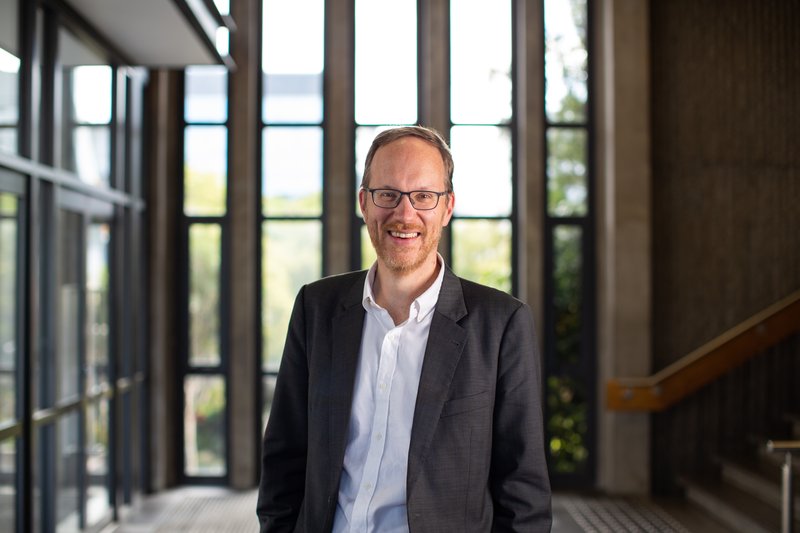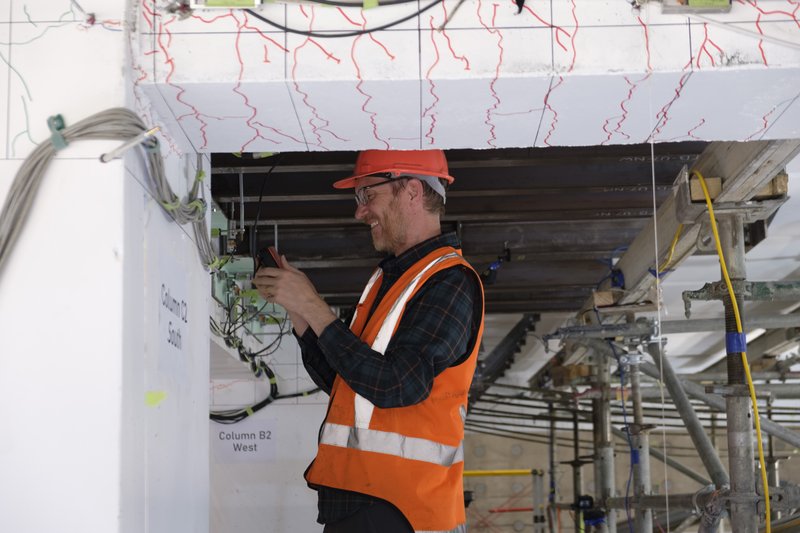15 Mar 2022
Visiting Christchurch when the February 2011 earthquake struck was a life-changing experience for Canadian Dr Ken Elwood CMEngNZ, whose new, dual-agency role as Chief Engineer focuses on increasing the resilience of Aotearoa’s building stock and reducing the impact of disasters.

Dr Ken Elwood. Image: Jonny Knopp.
Visiting Christchurch when the February 2011 earthquake struck was a life-changing experience for Canadian Dr Ken Elwood CMEngNZ, whose new, dual-agency role as Chief Engineer focuses on increasing the resilience of Aotearoa’s building stock and reducing the impact of disasters.
A specialist in seismic design of buildings at the University of British Columbia, the Canadian structural engineer was visiting Aotearoa to attend a professional conference when the Christchurch earthquake struck.
“I had been at a conference in Queenstown on masonry buildings, and on 22 February in 2011, I was in Christchurch at a seminar on the seismic assessment of existing buildings,” he says.
“I watched a masonry building on High St partially collapse in front of my eyes. ”Following the big quake, he stayed in New Zealand for a couple of extra weeks to help with building assessments.
“It was a life-changing experience in many different ways and it has definitely impacted me as a researcher.
Until then, I’d always been focused on the technical, but when you are faced with an earthquake and the response to it, you realise that a lot of the impacts lie beyond that. - Dr Ken Elwood
He says he became much more interested in multidisciplinary work, such as the social sciences and decision making in a post-earthquake environment.
Upon returning to Canada, Ken continued to work remotely with key people within New Zealand’s engineering profession. In 2014 he moved here and was appointed the Ministry of Business, Innovation and Employment’s (MBIE) Chair of Earthquake Engineering, a professorship at the University of Auckland.
Recently, he was appointed Chief Engineer (Building Resilience), a new role created by the Earthquake Commission (EQC) and MBIE, which will work across both organisations to help increase the resilience of our building stock and reduce the impact of disasters.
Ken says his ultimate goal in the role is to connect policy, research and engineering practice, as the collaboration of these three parties is crucial to improving building resilience.
In recent years, the EQC and MBIE have collaborated and co-founded several projects related to building resilience, including the Low Damage Seismic Design Project and the revision of the National Seismic Hazard Model (NSHM). The latter calculates the likelihood and strength of future earthquakes and has not been revised since 2010. In the past decade, there has been an explosion of knowledge drawn from the Canterbury and Kaikōura earthquakes, which will be included in the new model.
“This is going to result in a step change in our understanding of earthquakes, and our building standards need to react to that, and, more generally, how we approach the design of buildings. I am involved, in my role as Chief Engineer, with the Seismic Risk Work Programme and one of its main purposes is to try and bring the model’s new knowledge into the building codes.”

Dr Ken Elwood
What new clarity will the NSHM provide? “Ironically, it is not going to bring clarity. It will explicitly identify and therefore highlight the uncertainty involved in the level of earthquake shaking anticipated in New Zealand centres.”
He adds: “Earthquake engineering is really about designing under uncertainty, but our codes and standards have not been sufficiently explicit about that degree of uncertainty, so sometimes we become complacent or do not fully appreciate the degree of uncertainty we are dealing with.
“The National Hazard model is going to give us a band of values and we, as engineers, are going to have to figure out how we deal with that band.”
The greatest challenge for engineers, he says, and indeed for society in general, will lie with existing buildings.
“We can always adopt the latest design principles in new buildings, but when our understanding of the risks posed by existing buildings suddenly changes, suggesting we need more retrofits to be done, the economics will make that challenging.
“We are therefore constantly juggling our changing understanding of the risk and what is feasible and practical from both an economic and social standpoint.”
That social standpoint is currently being assessed by the New Zealand Society for Earthquake Engineering and EQC’s Resilient Building Project, which is looking at society’s expectations of buildings and earthquakes, “with the idea that it really is societal expectations that should drive the performance targets of the building code”.
He says: “Fundamentally, life safety is paramount but there’s always a probability of a larger earthquake that is going to cause greater damage or even collapse, so we still need to accept a degree of risk of fatalities, but how do we set that acceptable level of risk?”
New Zealand really struggles with maintaining building standards and guidelines due to the wealth of documents that need to be kept current, he says.
“I would very much like to establish a sustainable mechanism by which we can maintain and make best use of new knowledge in our standards and guidelines for building assessment.”
Ken says New Zealand has always been very good at collaborating and bringing new research to bear in the way we approach our buildings.
“But we are essentially trying to develop and maintain these documents in a country of five million people, in the same way for example, as the US does with a population of 350 million, and the documents need to cover the same things. I do think we need to find ways in which we can better leverage the investment by other countries.”
The softly spoken Canadian, who, along with his wife and children became New Zealand citizens during the country’s first lockdown in April 2020, certainly has his work cut out for him in his new role.
So, what comes first? “Right off the bat, the two big ones are the Seismic Risk Work Programme and the Low Damage Seismic Design project, and so I will be working with industry to bring forward the changes in the NSHM into the design of new buildings and to clarify and support the further implementation of low damage design technologies into our buildings.”




